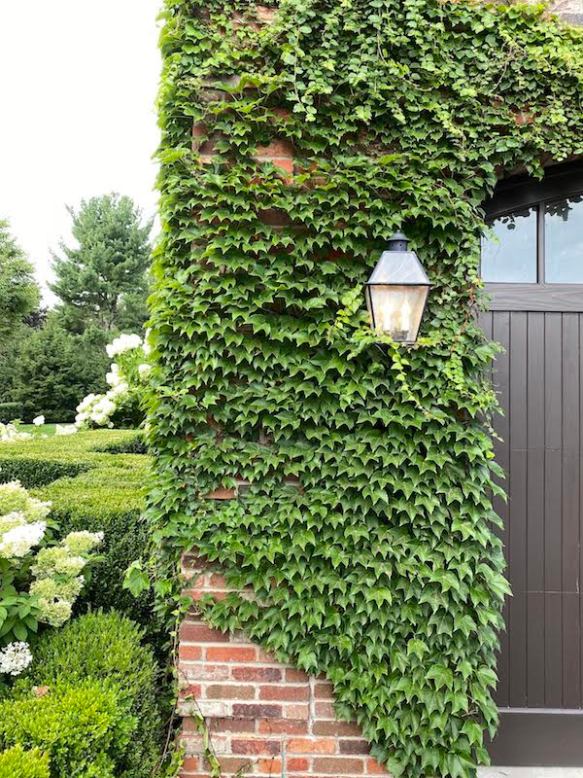


The idea of having a living plant grow on your walls has always intrigued us. Would it insulate the building better? Is that why it’s seen throughout many places in the world with colder climates? Who’s bright idea was it to have foliage covering your exterior stucco in the first place?! The next question isn’t for the faint of heart. Wouldn’t that be an open invitation for rodents, bugs and spiders? See, we warned you!
As aesthetically pleasing as it appears, there are some things to consider. The suction on English ivy is ridiculously strong. They hold on for dear life, gripping onto anything it grows along and doesn’t let go easy. It can affect the exterior stucco, wood and paint. A better option is Boston ivy. It does require more pruning, as it grows fast, but doesn’t have the same suction strength as English ivy. Ultimately, it’ll be easier to remove when the time comes.
On the flipside, it’s undeniably charming. We adore the look of a home, especially tutor style, with ivy growing up against it. We’ve seen where the ivy is trained to grow along carefully placed wire in a diamond shape, along the lower portion of a Cape Cod style home that was so charming. It had a large lattice effect.
If you are willing to look past the possibility of little animals climbing along your exterior walls of your home, you too can enjoy the elegant look ivy as seen on old mansions, forest cottages, and grand European estates.
Hope you had a wonderful Tuesday!
XO, The Bloom TDL
(images via pinterest, zhush and pixabay)
